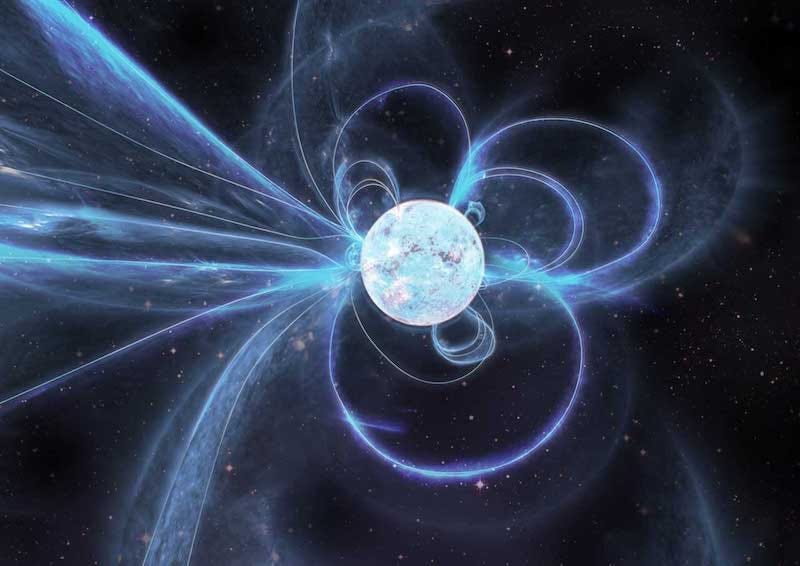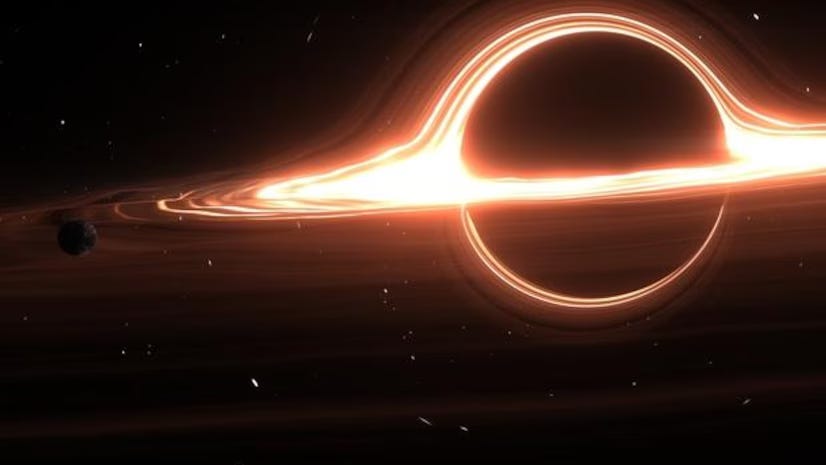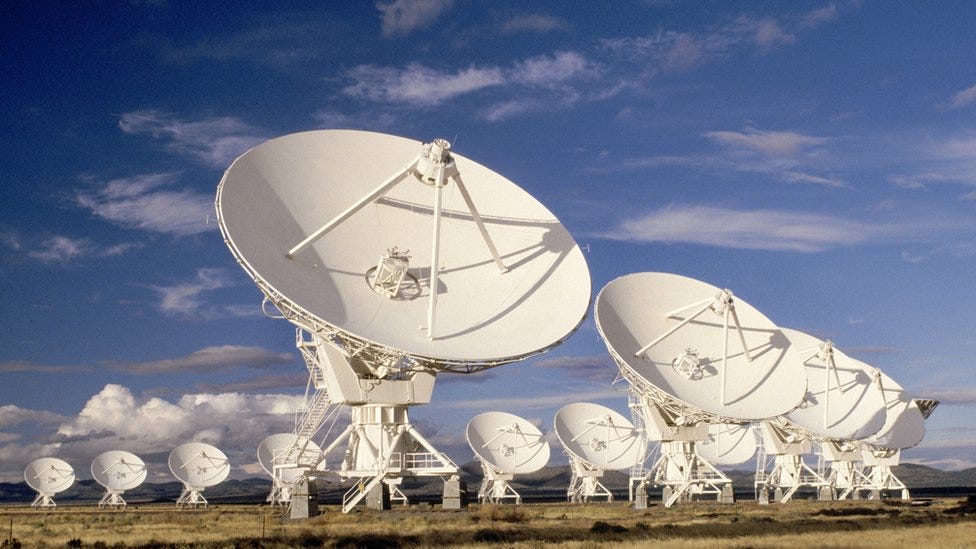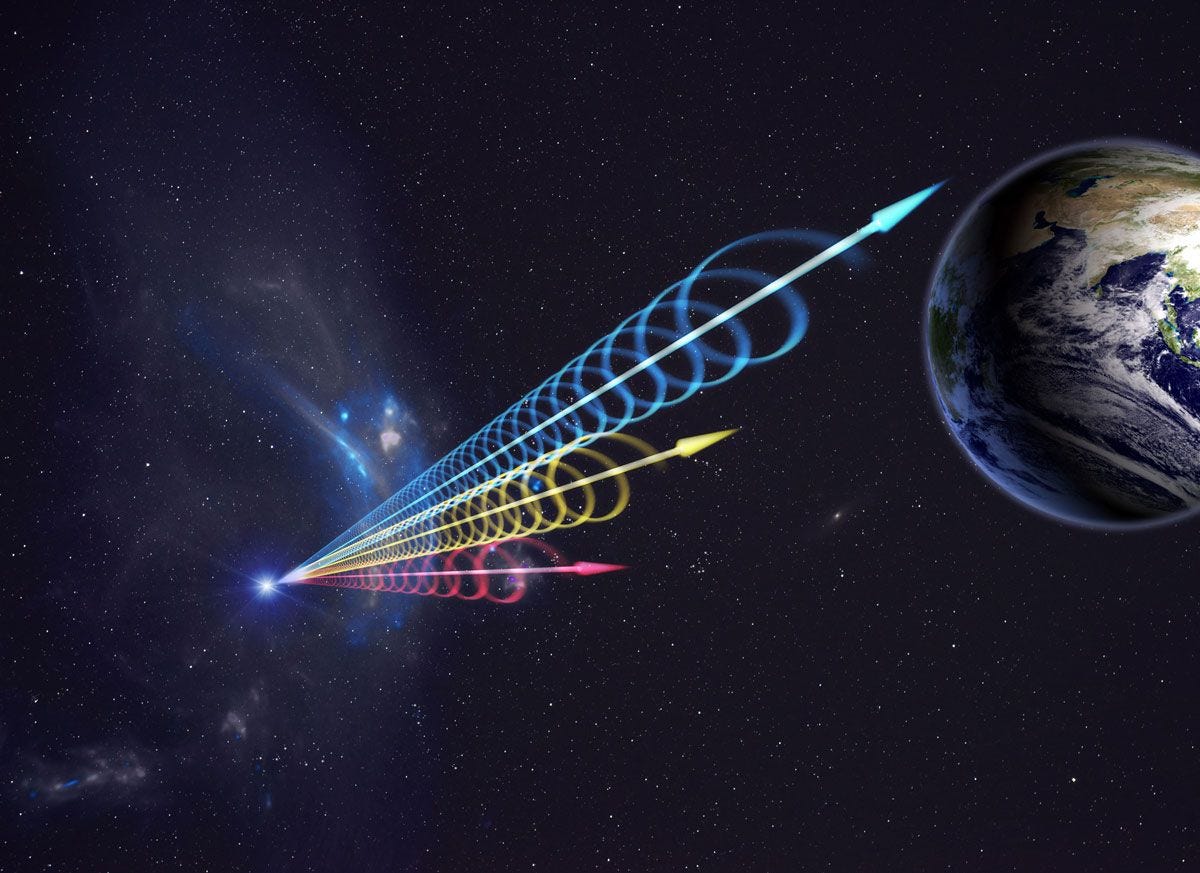What are FRBs?
So what are FRBs? FRBs stand for Fast Radio Bursts. They are powerful bursts of radio waves that occur for incredibly short durations of time. FRBs can release as much energy as the sun does in an entire day, in a few milliseconds. They were earlier thought to be a rare phenomenon, but with advancements in technology, more and more of these bursts are being detected. However, what causes them is still a mystery.
Origins
FRBs have been traced to certain vicinities and sometimes even specific objects like black holes, but we still don’t have a complete understanding of what processes and reactions caused them. We know where it came from, but we don’t know why. Here are a few objects that FRBs have been traced to (or are believed to come from) -
Neutron stars: One theory is that they come from the collisions of neutron stars - incredibly dense objects composed entirely of neutrons, formed after the death of a star. When the 2 neutron stars merge, they release a lot of energy. This energy is believed to cause FRBs.
Magnetars: Another possible source of FRBs could be magnetars. Magnetars are a type of neutron star, which have extremely powerful magnetic fields. These magnetic fields cause all sorts of intense phenomena on the star, like magnetic flares (sudden release of electromagnetic radiation). Radio waves are also a form of electromagnetic radiation. This has led experts to believe that magnetars are also one of the sources of FRBs
Black holes: When a star gets too close to a black hole, it can get ripped apart and consumed by it. This process releases a lot of energy and could be a possible source of FRBs.
Galaxy Mergers: Galaxy mergers are also believed to be the main causes of FRBs. Even recently an extremely powerful FRB was detected. It released as much energy as the sun would in 30 years in just 1 millisecond. This FRB is believed to have been caused by a distant galaxy merger. You can read more about that FRB here.
Aliens: While this is a very unlikely idea, there are some who believe that FRBs may be deliberate communication signals sent by intelligent extraterrestrial beings. However, this is just a theory and has no proof behind it.
Classification -
FRBs are completely unpredictable. They can occur at any time and anywhere. They are classified into 2 types -
Repeaters: These FRBs continuously repeat themselves after periods of time. These time periods are often unpredictable and keep changing. Some could repeat every hour, some every day or maybe more. Some FRBs that repeat after a very long time may get classified as non-repeaters due to a break-off in observation. FRBs may continue to repeat for months or years or sometimes they could stop repeating in a short time. However, it is hard to be completely sure if an FRB has stopped repeating as the time intervals can largely vary. It could repeat again after the observations stop.
Non-Repeaters: Just like the name suggests, they occur only once for an extremely brief moment and then disappear. They don’t repeat themselves. However, many FRBs could have been falsely classified as non-repeaters due to a cut-off in observation.
Technology advancements in detecting FRBs
Since FRBs occur only for a few milliseconds, discovering an FRB by simply scanning a tiny portion of the sky would take a very large amount of luck. This is why new and advanced telescopes with a wide field of view and high sensitivity play a large role in their detection. Some examples are the CHIME Telescope in Canada, the ASKAP Telescope in Australia and the world’s largest single-dish radio telescope: FAST located in China. Such telescopes with their advanced technology are the main reason behind the increase in FRB detection over the past few years.
How are they located?
Since FRBs occur only for a few milliseconds at most, it is extremely difficult to capture them let alone get enough data to pinpoint their location. Here is how it is done -
Most radio telescopes have multiple antennas. These antennas can be placed in different locations around the world, forming a telescope array. In this case, each antenna is like a telescope of its own, working together to form one massive telescope. Another type of telescope has one massive structure with multiple antennas positioned on it, like the FAST single-dish telescope.
When an FRB enters the atmosphere, it gets detected by one of the antennas. Then it gets detected by the next one and then the next. Precise technology is used to measure the amount of time the FRB took to reach each antenna, and the time difference is calculated.
The data from all the antennas are put together and the patterns in the radio waves, help find the direction from which the wave originated. You can also find out the location from which it originated.
What can FRBs tell us?
When FRBs travel through space, they interact with the matter on their path and get dispersed. Once these FRBs reach the earth, scientists measure the amount of dispersion in the FRB and can tell how much matter was present in the path taken by the FRB. This technique helps us map how matter is spread out in the universe.
An FRB can also tell us more about the extreme conditions in space and the objects that it encountered on its path like neutron stars and powerful magnetic fields.
FRBs that come from billions of light-years away can be studied to understand the universe’s past. This is because since they came from millions of light-years away, they would have been travelling in space for a billion years before they reached us. Using previously mentioned techniques, scientists can study what the early universe was like.
Some believe that FRBs could be a signal sent by intelligent alien life. While this is unlikely, it could be one of the sources of FRBs. This makes some of them of great importance to the Search for Extraterrestrial Intelligence (SETI).











